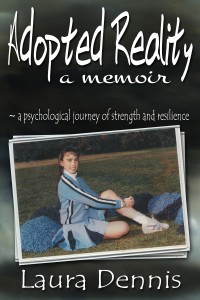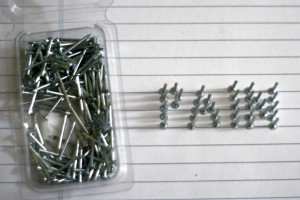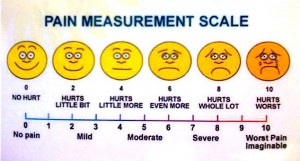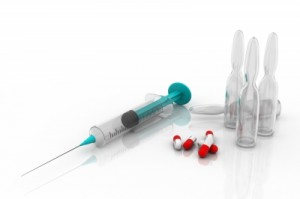Pain.
When my three-year old son stupidly accidentally got his tiny, middle finger stuck in a hotel door, the only thing he was willing to do to combat the pain (besides scream) was to stand motionless while cold water ran over his poor little “tall man.”
That, and refuse to let mommy out of his site.
I held him and gave him children’s Advil (Serbian version, not recalled). After ten minutes, we laid down together and he did what he does best when he’s in pain or overwhelmed with anxiety: he slept.
This may come as news to some of you, but no, I’m not a therapist and I’m not even pretending to be. I just find the human mind fascinating, and feel that by understanding and “unpacking” my own fears and compulsions, I can heal and live more fully. Perhaps in the process, I can help others live with integrity, and I can teach my kids something about surviving in this world.
Pain Management
And so, I’ve been thinking a lot about pain.
Physical pain, emotional pain, psychological pain. How pain is managed. Medical doctors, psychologists, therapists, life coaches, religious figures, and yes, the man on the street, all have different approaches to dealing with pain. Pain management is its own branch of medicine.
My tried-and-true method is a 400mg capsule of ibuprofen, but that’s a story for another day. I’m not an expert, but do want to share my experience. It’s just one woman’s perspective, but I do think it speaks to something bigger. A method, perhaps a way to deal with and experience pain, and to avoid being scarred by it.
This technique, I’ve found, arises in a variety of areas, and is used differently in depending upon the context. It’s called grounding. It can be seen to help one endure physical pain, to bring someone through emotional hurt, and to allow a dissociated or otherwise delusional person to return to reality, well, to the shared, everyday reality (the nature of reality, also, a discussion for another day).
Grounding oneself … to reality
What is grounding and what do I mean by it?
Grounding is a technique, often used in the treatment of PTSD, which Psychology Today states is “characterised by flashbacks and dissociation. Grounding techniques are essential to help people remain focused and in the present.”
Here’s my teeny tiny story about pain and grounding.
I have birthed two children, via scheduled cesarean. [Emergency caesareans look completely different, I am told.] Overall both births were successful in that I got healthy babies and my recovery was quick and without long-term side effects except the debilitating sleep deprivation that accompanies young motherhood. Following the birth of my second child, I was determined to rest and get myself out of the hospital as quickly as possible–my eldest was not allowed to visit me thanks to the 2010 swine flu scare, and I wanted to be there for both my kids.
I had my IV removed about 24-hours after the surgery, with just the “pin” in my arm–in case I needed a drug intravenously. Nevertheless, I wasn’t connected to anything, and had even walked unaided (but very slowly, carefully and hunched over) just 10 hours after surgery. Thanks to various opioids that I then took orally, my pain was minimal. In the area of 1-2, as I learned from the helpful signs placed throughout the hospital.
I slept a lot. I slept and I nursed my son. I kept track of when I was due for pain medication, as I found the nurses somewhat lackadaisical–letting it “slip” by thirty minutes or one hour. I’d learned with the birth of my eldest that with OxyContin, I needed medication every. four. hours. This was not my first time to the rodeo.
But like I said, I was sleeping a lot. Maybe the nurse didn’t want to wake me (I doubt it, they will wake a sleeping mom just to announce proudly, “Hello, there’s a photographer here to snap pics of mom and baby.” … As. if. I would agree to that). Maybe she was busy. But I was sleeping, and five o’clock came and went. When the nurse came in at 5:30 pm, she woke me up.
I had just enough time to say, “You were supposed to be here at five” … before the pain kicked in. And by pain, I mean excruciating sensation. Perhaps the discomfort was kept at bay because I was sleeping. But as I emerged from the haze, reality set in, and I went from 1-2 to a 10+ on the scale in 0.5 seconds.
Aaaand … that’s when I started screaming.
It was a pain I’d never felt before. I was not centered on my lower belly; in fact I was not even aware of the scar area that was still covered in bandages. The feeling existed in my entire body. It was uncontrollable. In spite of being able to walk to-and-from the bathroom, I was suddenly so weak, I couldn’t even stiffen myself to brace against the pain. I couldn’t tense a muscle, and yet, my entire body felt tight as a newly laced drum. Even as I screamed, I had a far-off thought that I was so embarrassed about the sounds that seemed to be emanating from my mouth. It was like the scream you make on a roller coaster when you believe no one will realize it’s you, and you release yourself to terrified, adrenaline-filled abandon.
Except what I was feeling wasn’t close to abandon or release.
The nurse remained calm, and I was pissed at myself that I couldn’t center my screaming enough to direct four-letter epithets toward her resigned attitude and tardiness in the first place. All I could create was primal sound. The nurse quickly took a vial and gave me pain meds through the remaining IV in my left arm. I couldn’t catch my breath. I couldn’t stop screaming. I wondered how long this was going to last. …
… And that’s when I felt her. …
Just on the inside of my left wrist, in the tiniest space the size of a dime. She gently but firmly stroked my wrist. My mind felt so far away, my body was betraying me, but once I felt her touch, I had something to cling onto. Something to which to attach my sanity. An anchor that I could use to return to my body. Slowly, slowly, my screams turned to panting, and I heard her say softly, “Just a few more minutes, and you’ll feel the medication taking effect.”
Return to Reality
And this is what I mean by centering, grounding. An object or in this case–that tiniest of touches, to experience pain (physical, emotional, psychological), survive it, and return to reality. Grounding, centering–it’s a whole area of study.
Dissociation may be a coping mechanism, one that can work quite well for the mind to “fly away” during a traumatic experience. But, having an anchoring object that allows one to return to the body, to the mind, is equally important.
Grounding as a technique to bring a person to a healthier, saner place is used in many areas of mental wellness and mind-body health. Diet management companies encourage using an object, grasping it when you feel the urge to emotionally eat. The object is meant to represent something important, like a goal that the holder does not want to give up as a result of emotionally eating. This object can help one return to reality, to real goals and healthy eating.
Then there’s the symbolic, esoteric centering object from the movie, Inception. The totem is something that tells you whether you are in a dream or real life. The spinner stops spinning in real life, in a dream, it keeps on spinning indefinitely. Not to get too out there, but the totem is meant to test if you’re in your own reality–dream or non-dream, or someone else’s dream.
Back in the hospital room, as I waited for the pain to subside, I wanted the nurse to apologize. I wanted to yell at her for incompetence. But I was not in a real position to complain, or slap the hand that was feeding me, as it were. I waited those couple of minutes, breathing shallowly, concentrating on her soft stroking of that sensitive part of my inner wrist. Finally, the medicine kicked in and the physical pain drifted away.
Then I did what my son instinctively does, I slept.
* * * * *
 Want to read more about my challenges with psychological and physical pain? The new and improved 2nd edition of Adopted Reality, A Memoir is available FREE on Story Cartel, in exchange for posting an honest review on Amazon. Click here to download your free copy today. The ebook version is compatible for all ereaders, including iPAD and Kindle.
Want to read more about my challenges with psychological and physical pain? The new and improved 2nd edition of Adopted Reality, A Memoir is available FREE on Story Cartel, in exchange for posting an honest review on Amazon. Click here to download your free copy today. The ebook version is compatible for all ereaders, including iPAD and Kindle.
I’ll be talking more about coping and processing, when it comes to trauma and PTSD when I host Juanima Hiatt here on Expat Adoptee Mommy. Juanima has helped me understand so much about the grounding concept and is the author of The Invisible Storm, available on Amazon.
Nails photo — All rights reserved by Mike Stroud / Mikey Riot Photography
Pain scale from livewithchronicpain.com, “Glass And Pills” by Michelle Meiklejohn and “Pills Syringe And Ampules” by ddpavumba from freedigitalphotos.net








Laura, I really like the thought of grounding. Someone once suggested that, to deal with worries or anxiety, a good thing to do is to consider the actual evidence of your experience, and use evidenced-based thought. Grounding sounds similar in that, in the face of an unpleasant reality, you stare at reality and see the extent of the unpleasantness, and see that it doesn't extend to infinity!
Addison,
This is so interesting. Yes–evidence-based: what is reality, and what can I do (or not do) about this reality? Yes, and in that way you can see that it has a beginning, a middle and an end … thi is an interesting concept, thanks!
Laura
Just downloaded your book, too! It'll take a while to get a review up, but I'm looking forward to reading it. Also, interested to see that you were born in New Jersey. Me too
Yes! New Jersey, but for me, without the accent
Can't wait to hear what you think of Adopted Reality!
Laura
I've just finished your book and will be working on a review this weekend. I'll also be in touch about your guest blog post. Progress!
Laura, you reminded me of my experience when I was about to give birth too. And I remember how much I appreciated the nurse who was there for me, holding me, hugging me, esp. when the anesthesiologist came for my epidural. I agree that touch does help comfort people in times of pain. Grounding, being in the present…these are truly worth keeping in mind, esp. for someone like me who gets too stressed out (psychological/emotional pain). Thanks for the reminder!
We do a lot of grounding in yoga. You've given me new ways to think about it.
I just learned something new today, so thanks. Next time I'm craving Reese Cups, I will find something to hold on to (maybe a scale?) instead. LOL But seriously, amazing writing and concept . . . I too am fascinated with the human mind and really enjoy your posts dealing with the psychological and emotional.
Ha! Yes, grab onto a scale … it's useful in several different ways: you can ground yourself by standing on it; literally. You can gaze at the number and be brought back to reality! Thanks for the laugh Love you! Laura
Love you! Laura